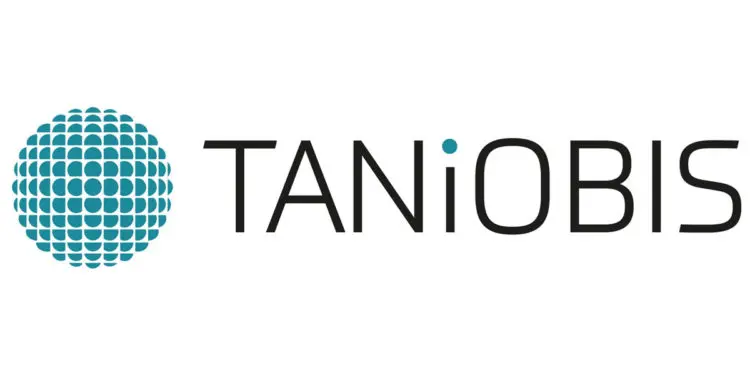Many of us will carry TANIOBIS products along with us or even work with them in the future. Effective as of July 1, 2020, H.C. Starck Tantalum & Niobium (Ta&Nb) will do business under the TANIOBIS brand.
A subsidiary of JX Nippon Mining & Metals, TANIOBIS produces high-quality materials, powders, and alloys based on tantalum and niobium. The branches and production sites in Germany (Goslar, Laufenburg), Japan (Tokyo, Mito), Thailand (Map Ta Phut) and the U.S. (Needham, MA) will continue to operate. Core applications for H.C. Starck Ta&Nb powders include additive manufacturing.
H.C. Starck Ta&Nb has 60 years of experience in manufacturing materials on the basis of tantalum (Ta) and niobium (Nb), which are both rare earths and refractory metals. The company processes these ores into high-performance powders tailored precisely to customer needs. Since 2018, H.C. Starck Ta&Nb and its more than 660 employees have been a part of JX Nippon Mining & Metals, a Japanese company. The headquarters were relocated from Munich to Goslar on March 12 of this year. The new TANIOBIS brand will take effect on July 1, 2020.
“Our new name is a combination of the two key raw materials used in our production operations, tantalum and niobium,” explains Masakazu Kanzaki, Vice Chairman & CEO at H.C. Starck Ta&Nb. “The characters ‘i’ and ‘s’ at the end stand for ‘innovative solutions’. That’s our personal promise of quality to our customers, underscoring the central role of innovation in our future approach.”
From smartphones to dental implants
Tantalum is a rare metal, but its unusual properties make it crucial to many applications. Worldwide production stands at about 2,000 tons a year. As a result, H.C. Starck Ta&Nb is in a leading position on the market in terms of development and production of tantalum and niobium powder. Although tantalum and niobium may not be very well known as raw materials, they do play an essential role in day-to-day life. A large portion of the tantalum produced is used for ultra-tiny capacitors. Tantalum electrolytic capacitors are used in advanced microelectronics, for example for mobile phones and computers, and in automotive engineering. Niobium, for its part, is a ductile, oxidation- and corrosion-resistant metal that is used to improve material properties and enhance the efficiency, safety, and performance of the relevant applications. For example, niobium is used in aircraft turbines, where it is crucial in reducing CO2 emissions.
H.C. Starck Ta&Nb also offers alloys based on niobium and tantalum that meet the very latest standards in medical technology. Among other things, the company is a leader in the development of biocompatible alloys for the production of patient-specific implants made using 3D printing. Additive manufacturing is an important field of application for powders from H.C. Starck Ta&Nb as a result. The spherical morphology of these powders makes them suitable for specific processing in commonly used 3D printing processes. On the whole, the company develops tantalum and niobium-based powders, and their alloys for the automotive, energy, aviation, electronics, chemicals, and medical technology industries. Electric mobility is an increasingly interesting segment, as tantalum and niobium will be used in production of lithium-ion batteries in the future.
Environmentally-friendly recycling a high priority
Recycling is another of the core competencies of H.C. Starck Ta&Nb. The company purchases and processes ores and secondary raw materials derived from recycling materials and has developed recycling processes of its own for a number of material streams (such as capacitors). “On the basis of continuous technological development, and with full awareness of our responsibility during the development of products, environmentally compatible recycling of waste products is a top priority. Our goal in doing this is to strengthen our customers’ satisfaction and the trust they place in us,” says Masakazu Kanzaki.
About H.C. Starck Tantalum and Niobium GmbH
H.C. Starck Tantalum & Niobium, headquartered in Goslar, is a leading global producer with over 60 years of experience processing high-quality materials based on tantalum and niobium. In addition to the Goslar site, the company has branches in Laufenburg (Germany), Tokyo and Mito (Japan), Map Ta Phut (Thailand), and Needham, Massachusetts (U.S.A.). The company produces solutions for a wide range of different applications, including for customers from the automotive, energy, aviation, electronics, chemicals, and medical technology industries. H.C. Starck Tantalum & Niobium also offers state-of-the-art alloys. Tantalum and niobium play an increasingly important role in new fields of technology as well, including additive manufacturing. Their high biocompatibility, resistance to corrosion and oxidation, and excellent mechanical properties make them an outstanding fit for 3D-printed implants or components in the aerospace industry. For more information, please visit www.hcstarck-tantalum-niobium.com (www.TANIOBIS.com from July 2020).


































